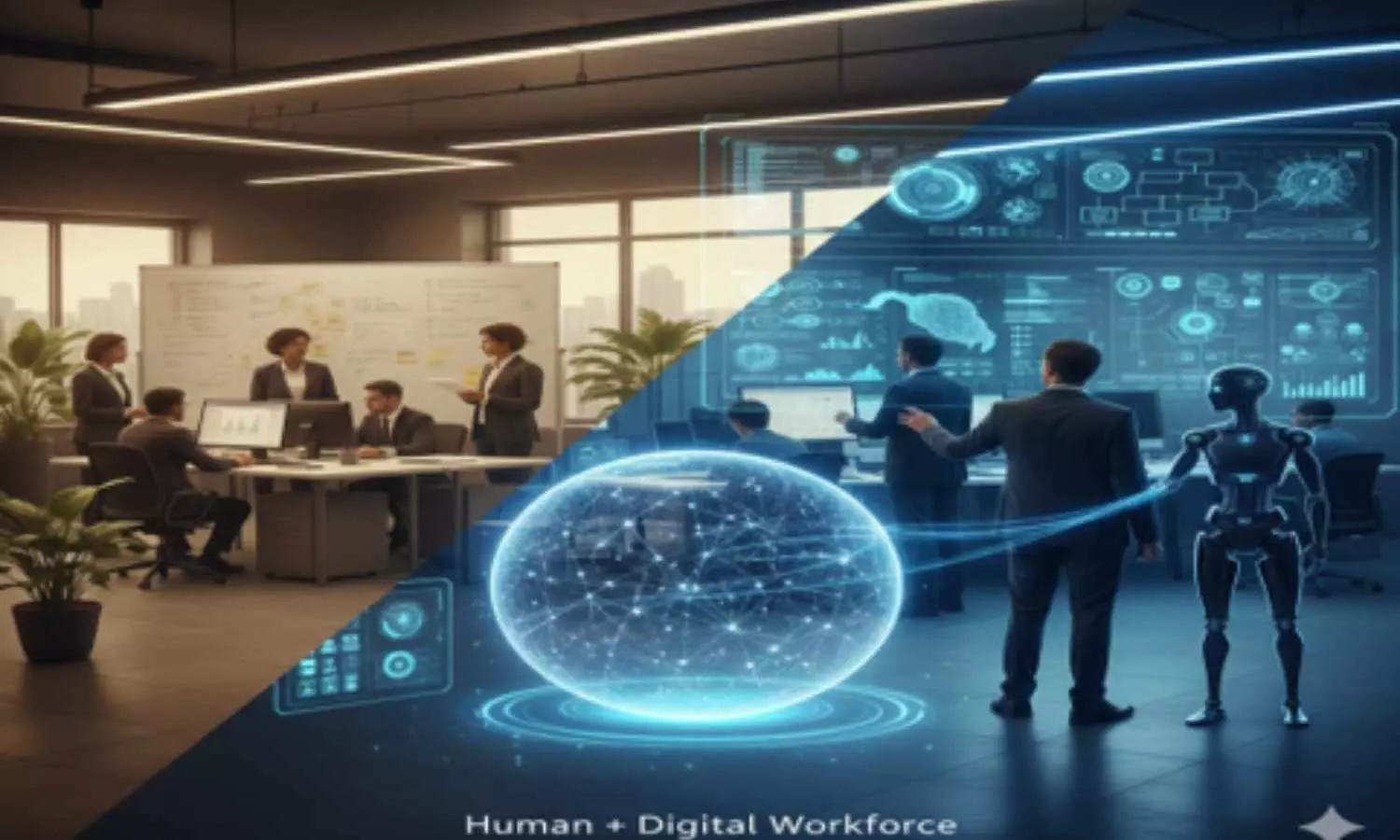The Human + Digital Workforce – A Monumental Shift in the World of Work
Discover how the Human + Digital workforce is reshaping global work dynamics, blending human skills with automation, AI, and digital technologies for the future.
The Human + Digital Workforce – A Monumental Shift in the World of Work

The world of work is undergoing a monumental transformation as organizations move from traditional, all-human teams to a Human plus Digital workforce. This shift is far more significant than simply adopting new technologies; it represents a fundamental redesign of how enterprises operate, where artificial intelligence agents function as capable, accountable digital employees. Their arrival is redefining leadership expectations, reshaping managerial responsibilities, and altering the structure of modern organizations.
The rise of digital labour is being driven by rapid advancements in agentic AI, capable of performing complex white-collar tasks that were once the exclusive domain of humans. NVIDIA CEO Jensen Huang captures this moment by envisioning a future where enterprises actively “hire” AI agents—digital nurses, AI accountants, AI lawyers—each taking on specialized roles. His perspective signals an essential truth: if AI is becoming part of the workforce, the operating model must evolve accordingly.
This shift is forcing a major realignment inside businesses, where the IT function begins to resemble an HR department for AI agents. Instead of recruitment and onboarding, teams identify the right agents, acquire licenses, deploy them, and integrate them into operations. Instead of traditional training, the focus shifts to model fine-tuning, injecting enterprise knowledge, and optimizing prompts to improve performance. Performance management now includes monitoring the accuracy, consistency, and exception rates of digital workers. Even policy and ethics responsibilities evolve, with AI governance taking center stage to ensure fairness, compliance, and responsible use. This blending of technical and people-management principles is becoming one of the defining leadership challenges of the modern era. Today’s executives are uniquely positioned: they are the last leaders of all-human workforces and the first to architect hybrid environments where people and intelligent agents collaborate.
The greatest impact of this shift is felt in delivery and operational leadership. When AI agents handle routine, predictable execution, managers must elevate their focus. They move from supervising tasks to orchestrating strategic outcomes, from tracking activity to managing exceptions where human judgment truly matters. Their role shifts from being operators to becoming designers of value flow, ensuring that human insight and digital speed complement each other effectively.
This transformation is not something that belongs to the future. It is a present-tense strategic imperative. Organizations must bridge the widening gap between AI adoption and workforce readiness. That begins with upskilling managers in AI literacy, because the new language of delegation is no longer verbal instruction but effective prompt engineering and structured oversight. This continues with re-architecting business processes so that enterprises deliberately decide which activities belong to digital labour and which require uniquely human strengths. And it requires updating performance metrics to reward outcomes, innovation, effective decision-making, and the ability to collaborate with and supervise AI-driven processes.
By recognizing and embracing this shift, leaders can unlock a model where digital agents deliver speed, scale, and consistency, while human employees focus on creativity, relationships, judgment, and complex problem-solving—areas where human strengths are irreplaceable. The future of enterprise success will not be defined by humans alone or by digital automation alone, but by the powerful combination of Human plus Digital working seamlessly together.
(The author is s a seasoned technologist and IIMA alumnus, currently managing the Hitech portfolio clients’ programs at a leading professional services organization.)

